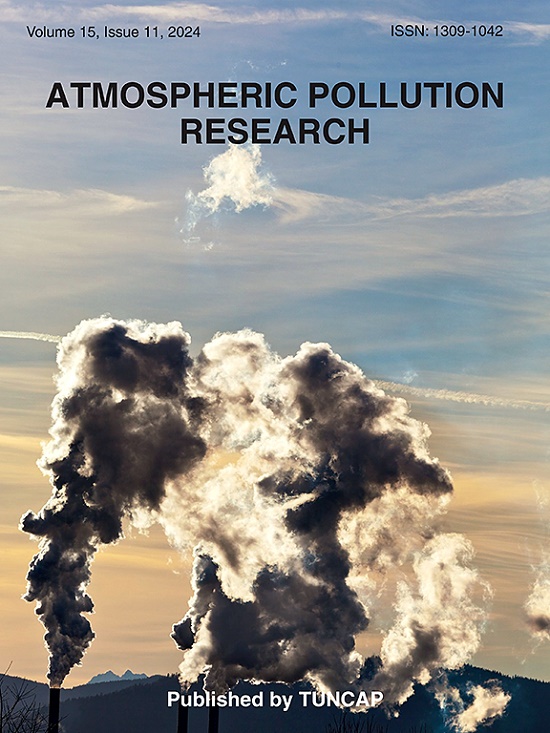Development of a representative transient cycle for evaluating real driving emissions of heavy-duty diesel engines
IF 3.9
3区 环境科学与生态学
Q2 ENVIRONMENTAL SCIENCES
引用次数: 0
Abstract
Accurately assessing real driving emissions is crucial for effectively controlling vehicle exhaust pollution. However, significant discrepancies exist between the World Harmonized Transient Cycle (WHTC) used for emission certification and real driving conditions of heavy-duty diesel engines in China. To address this issue, this study introduces a two-step method for developing representative transient cycles. In the first step, short strokes are classified using the k-means clustering algorithm with adaptive particle swarm optimization to identify key kinematic scenarios for heavy-duty diesel vehicles. The Markov Chain Monte Carlo method is then applied to simulate driving patterns for these scenarios, thereby constructing the heavy-duty real driving cycle (HRDC). In the second step, the heavy-duty real transient cycle (HRTC) for diesel engines is generated by integrating typical transmission system and gear matching rules based on the HRDC. The emission test results indicate that compared to WHTC, NOx, PM, and PN emissions under HRTC increased by 36.69 %, 4.57 %, and 78.73 %, respectively. Additionally, transient soot emissions under HRTC are 155.74 % higher than those predicted by steady-state interpolation. The primary factor leading to transient soot emission deterioration is a sudden torque increase exceeding 40 %/s, observed during idle or motoring conditions. These findings provide a solid foundation for reliably evaluating the road emission performance of heavy-duty diesel vehicles.
开发一种具有代表性的评估重型柴油机实际驾驶排放的瞬态循环
准确评估实际驾驶排放对于有效控制汽车尾气污染至关重要。然而,用于排放认证的世界统一瞬态循环(WHTC)标准与中国重型柴油机的实际驾驶状况存在较大差异。为了解决这一问题,本研究引入了一种两步法来开发具有代表性的瞬态循环。首先,采用k-means聚类算法和自适应粒子群算法对短冲程进行分类,识别重型柴油车的关键运动场景;然后应用马尔可夫链蒙特卡罗方法模拟这些场景的驾驶模式,从而构建重型真实驾驶循环(HRDC)。第二步,将典型传动系统与基于HRTC的齿轮匹配规则相结合,生成柴油机重载真实瞬态循环(HRTC)。排放测试结果表明,与WHTC相比,HRTC下NOx、PM和PN排放量分别增加了36.69%、4.57%和78.73%。此外,HRTC下的瞬态烟尘排放量比稳态插值预测值高出155.74%。导致暂态烟尘排放恶化的主要因素是怠速或行驶状态下扭矩突然增加超过40% /s。这些研究结果为可靠地评价重型柴油车道路排放性能提供了坚实的基础。
本文章由计算机程序翻译,如有差异,请以英文原文为准。
求助全文
约1分钟内获得全文
求助全文
来源期刊

Atmospheric Pollution Research
ENVIRONMENTAL SCIENCES-
CiteScore
8.30
自引率
6.70%
发文量
256
审稿时长
36 days
期刊介绍:
Atmospheric Pollution Research (APR) is an international journal designed for the publication of articles on air pollution. Papers should present novel experimental results, theory and modeling of air pollution on local, regional, or global scales. Areas covered are research on inorganic, organic, and persistent organic air pollutants, air quality monitoring, air quality management, atmospheric dispersion and transport, air-surface (soil, water, and vegetation) exchange of pollutants, dry and wet deposition, indoor air quality, exposure assessment, health effects, satellite measurements, natural emissions, atmospheric chemistry, greenhouse gases, and effects on climate change.
 求助内容:
求助内容: 应助结果提醒方式:
应助结果提醒方式:


